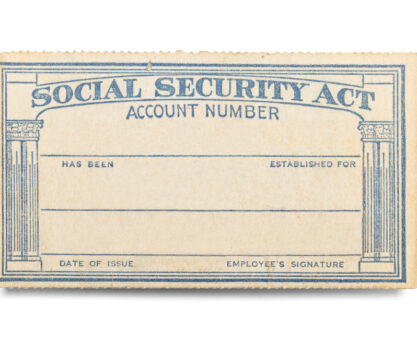A recent survey by the Nationwide Retirement Institute® sheds light on the gaps in our understanding of Social Security. For instance, only 8% of respondents could correctly identify the main factors that determine the maximum benefit you can receive. Furthermore, only 13% knew their Full Retirement Age with half of the participants believing it to be younger than the actual number. So, it might be time to revisit some of the basics.
How Is Social Security Funded?
Like most things, Social Security is funded via tax. Specifically, a payroll tax that’s equal to 6.2% of your earnings. The maximum income threshold that can be taxed in 2024 is $168,000, meaning anything over that amount is not subject to the tax. Your employer then matches that percentage resulting in a 12.4% contribution. The money paid in is used to fund the benefits of current retirees and any excess is invested in Social Security’s trust funds.
“When you retire before reaching the FRA, you permanently reduce your benefits, sometimes by as much as 30%.”
Who Is Eligible For Social Security?
Generally, you must acquire 40 credits to be entitled to Social Security benefits. How do you earn a credit? In 2024, for every $1,730 of qualifying income earned, you receive one credit. You can earn a maximum of four credits per year, so any income past $6,920 ($1,730 x 4) doesn’t add credits. Since you can only receive four credits per year, you must work at least 10 years to qualify for Social Security benefits. Nonworking spouses over 62 can collect benefits based on their retired partner’s work record.
What Determines My Benefit Amount?
The main factors are your work history, earnings, and retirement age. Assuming you’ve acquired the 40 credits required for benefits, Social Security will compute your monthly payment using the “average indexed monthly earnings” computation. It summarizes up to 35 years of earnings and adjusts it to reflect changes in wage levels that occurred throughout your career.
Know Your Full Retirement Age (FRA)
While you’re eligible to apply for benefits at age 62, you won’t receive your full benefit until you hit your Full Retirement Age (FRA). If you were born between 1938 and 1959, your FRA is between 65 and 66 based on your birth year. For those born in 1960 or later, the age is 67. When you retire before reaching the FRA, you permanently reduce your benefits, sometimes by as much as 30%. For example, if your full benefit would have been $2,000 per month, claiming early could cost you $7,200 annually for the duration of your remaining years. Conversely, if you wait until after FRA, your benefits increase by 8% a year until they max out at age 70.
Still have questions? Reach out to an FRC® trained advisor for more information.
























